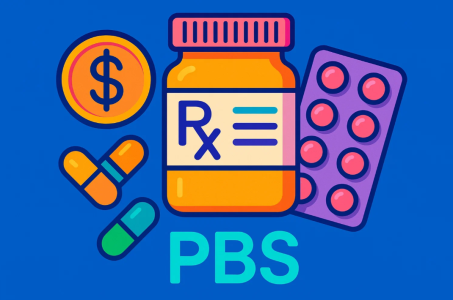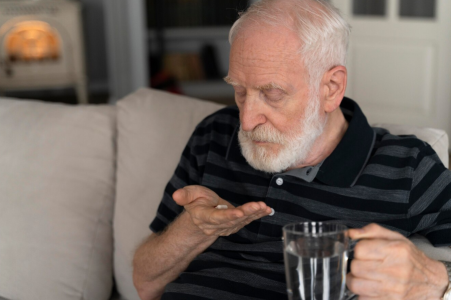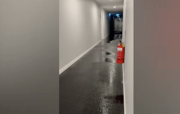Just What the Doctor Ordered? Labor’s $25 PBS Script Cap Aims to Soothe Hip Pockets
Imagine walking into your local pharmacy and never paying more than $25 for each prescription. Sounds almost too good to be true in 2025, doesn’t it? Yet that’s exactly what the Australian government is promising.
In a bid to ease cost-of-living pressures – especially for those of us in our golden years – Prime Minister Anthony Albanese’s Labor government plans to cap Pharmaceutical Benefits Scheme (PBS) script costs at $25. If all goes to plan, this change will kick in on 1 January 2026, effectively rolling back medicine prices to levels we haven’t seen since 2004.
This article will break down what the $25 cap means, why it matters (hint: cheaper medicine isn’t just good for your wallet, it’s good for your health), and how it fits into the bigger picture of healthcare in Australia. So, let’s dive in and see whether this script cap is just what the doctor ordered for Aussie seniors, or merely a drop in the bucket.
The headline news is straightforward: Australians will pay no more than $25 for any medicine listed on the PBS, under new legislation the government is introducing. Currently, if you’re a general (non-concession) patient, you might pay up to $31.60 per PBS prescription – that’s the official cap as of this year. The plan is to cut that maximum down by more than 20% to a flat $25 ceiling. In practical terms, any drug on the PBS – whether it’s for blood pressure, cholesterol, arthritis, you name it – would cost $25 or less for general patients at the pharmacy counter.
To put this in context, the PBS (Pharmaceutical Benefits Scheme) is the federal program that subsidises prescription medicines to make them affordable. Under the PBS, the government pays the bulk of the cost of medications for most medical conditions, and patients just pay a co-payment (the out-of-pocket portion). There are two tiers of co-payment: one for general patients and a lower one for concession card holders (like pensioners). This new $25 cap is targeting the general patient co-payment.
Health Minister Mark Butler summed up the move simply: “The Australian Government is making cheaper medicines even cheaper – with a script to cost Australians no more than $25 under the PBS”. It’s part of a concerted drive to reduce everyday expenses. In fact, the government has been framing this as a key cost-of-living relief measure, intended to help Australians keep more money in their wallets while still getting the treatments they need.
Notably, this isn’t coming out of thin air – it was announced as part of the 2025–26 federal Budget. The government earmarked about $689 million over the next few years to fund this policy. (Essentially, Canberra will cover the difference so pharmacies aren’t out of pocket.)
Treasurer Jim Chalmers, in his budget speech in March, proudly declared, “Tonight, we reduce the maximum price for a PBS script from $31.60 to $25. Pensioners and concession cardholders will still pay $7.70 a script because we froze their costs as well.”. That line got a round of applause – and likely a sigh of relief from those watching at home.
Before we cheer too hard, keep in mind this $25 cap isn’t in effect yet. It’s planned for 1 January 2026. Why the wait? Well, the change needs to pass through Parliament and, practically, the whole system (pharmacies, IT systems, PBS accounting) needs to adjust.
The good news is the opposition has backed it too, so there’s broad support. In fact, the Coalition’s health spokesperson, Senator Anne Ruston, chimed in to support the policy, saying it will “ensure Australians have more affordable access to the medicines and treatments they need, at a time when healthcare has never been more expensive”. It’s not often we see bipartisan agreement on a cost-of-living measure, but when it comes to cheaper meds, it appears everyone’s on board.
For those who like their information bullet-pointed (and let’s face it, sometimes it’s easier), here are the key takeaways about the proposed PBS script cap:
In short, for millions of Australians who don’t have concession cards – including many self-funded retirees and working adults – this reform promises some welcome hip-pocket relief every time you visit the chemist.
Source: 9 News Australia / YouTube
To appreciate how significant a $25 cap is, we should recall the last time we paid so little for prescriptions. It’s been over two decades since the PBS general co-payment was $25 or less. Think about that: the last time Aussie patients paid no more than $25 for a script was 2004. John Howard was Prime Minister, petrol was around a dollar a litre, and a loaf of bread cost maybe two bucks. A lot has changed since then – and mostly, prices have gone up, up, up.
So bringing the price ceiling down to 2004 levels is a big deal. As Health Minister Mark Butler put it, “The last time Australians paid no more than $25 for a PBS medicine was over 20 years ago. Cheaper medicines are good for the hip pocket and good for your health.”.
For a bit of perspective, in January 2023, the PBS general co-pay was cut from $42.50 down to $30 – that was the first time in PBS history that the dollar amount had ever been reduced. Prior to that, the pattern was a steady climb, mostly in line with inflation.
Source: Australian Dept of Health, Disability and Ageing / YouTube
Without that 2023 cut, and the upcoming 2026 cut, the cap would have continued to rise. In fact, the Pharmacy Guild (which represents Australia’s chemists) pointed out that if nothing had changed, the maximum co-payment was on track to hit around $50 by 2026. Yes, $50 for a single script! Instead, if this policy goes through, it will be $25. That’s half of what we might have been paying – a remarkable turnaround.
It’s not just numbers on a page; it’s something you’ll feel in your own budget. Many older Australians can recall when PBS scripts were $3.80 (in the 1980s) or $6.20 (in the 90s) – usually only the concession prices stayed that low over time. The general rate, meanwhile, crept up and up, hitting $20 by 1998, $30 by 2016, and $42.50 by 2022. Now it’s being yanked back down. It almost sounds like a typo, but it’s real: twenty-five bucks a script, even if the medicine’s full price runs into the hundreds or thousands (the government subsidy covers the rest, as always).
If you’re wondering why now?, credit goes partly to the intense focus on the cost of living in recent years. Politicians are acutely aware that Australians – especially seniors on fixed incomes – are feeling the pinch. Bringing down medicine costs is one tangible way to offer relief.
As Prime Minister Albanese said, “Cheaper medicines is another way we are helping with the cost of living, while putting downward pressure on inflation… we’ve got your back.”. For a government grappling with inflation, there’s a nice side-benefit to this too: if folks are spending less on medications, that’s effectively easing inflation (since the PBS co-payment is part of the Consumer Price Index basket). It’s not a magic bullet for the economy, but every little bit helps tame those price rises.
Let’s talk dollars and cents in real-life terms. How much might you save with a $25 script cap?
It’s important to clarify who doesn’t directly benefit from the $25 cap: those who are already on concession prices. If you’re a pensioner or have a concession card, you currently pay $7.30 per script (that was the rate in 2022) or $7.60, now $7.70 – it creeps up a few cents with CPI. The government has frozen that concession rate at $7.70 for the rest of the decade, so it won’t rise further for a while, but it also won’t drop to $7 or $5. However, since $7.70 is already a lot lower than $25, you’re already getting the best deal possible on your meds.
In a household of two seniors where one might have a concession card and the other doesn’t (it happens – e.g. one on an aged pension, one on a self-funded retirement just above the pension cut-off), the new policy would significantly help the non-concession partner. It’s also a boon to any of us who might not qualify for a concession card but still feel the sting of medicine costs – for example, those just under the pension age, or those who haven’t applied for the Commonwealth Seniors Health Card yet (consider applying if you’re eligible!).
The policy particularly targets middle-income earners and self-funded retirees who have been paying full freight up to the general cap. These folks often fell through the cracks: they aren’t poor enough for concession, but not necessarily wealthy enough to brush off $40 or more a month per medication. For them, $25 flat per item is a relief and may mean they can stick to their prescribed treatment without financial stress.
Now, you might ask: What about the PBS Safety Net? Doesn’t that already cap yearly spending? Yes, the PBS has a safety net threshold – once you’ve spent a certain amount on scripts in a calendar year, any further scripts drop in price (to the concession rate for general patients, and to $0 for concession patients).
For 2024, the general safety net threshold is around $1,563, and for concession it's 36 scripts (after which meds become free for concession card holders for the rest of the year). The government actually lowered the Safety Net thresholds by 25% in 2022, meaning people qualify for free or cheaper meds sooner than before – another quiet win for patients.
The new $25 cap will work hand-in-hand with that: even as you approach the safety net, each script is cheaper, delaying or reducing any financial strain mid-year. And once you hit the safety net, general patients pay only $7.70 per script after that (same as concession rate) – which, interestingly, means general patients hitting the safety net would not benefit from a $25 cap at that point because they’re already down to $7.70 per item.
The bottom line is that this measure is mostly about upfront affordability. It’s trying to remove the sting from each pharmacy visit. It’s worth noting that pharmacies can still offer discounts too. Currently, chemists are allowed to discount up to $1 off the PBS co-payment if they choose (many do this as a courtesy to compete or help regular customers).
According to the Health Minister, when the co-pay drops to $25, “all medicines that pharmacies can discount today can be discounted once the co-payment is cut to $25”, because the law will include provisions to protect that discounting ability. So you might even find a friendly pharmacist charging $24 instead of $25 – but let’s not count on that everywhere.
Saving a few dollars is great, but there’s a bigger issue at play: health outcomes. When medicines are cheaper, people are more likely to actually take them as prescribed. It’s that simple. And conversely, when meds are expensive, some people skimp, skip doses, or don’t fill prescriptions at all – and that can lead to serious health consequences (and higher costs down the track due to complications or hospitalisations).
Sadly, this isn’t just a theoretical concern. It’s been happening in Australia. Research and surveys have consistently shown cost to be a real barrier for patients. Up to 1 in 5 Australians have either skipped doses, delayed refilling a prescription, or outright not filled a script in the last few years because of the cost. Among people in regional and rural areas, the figure is even worse – as high as 1 in 3 have had to cut back on medicines due to financial pressure.
These figures come from a 2023 survey by Insightfully (commissioned by the Pharmacy Guild), but they echo what we’ve heard for years. Even a decade ago, National Seniors Australia found that about 12% of over-65s were skipping medications due to cost (and over 20% of those aged 50–64 were doing so). That’s a lot of people potentially putting their health at risk because they can’t comfortably afford their meds.
For many older Australians, managing multiple chronic conditions means several prescriptions to fill regularly. Imagine having to choose which medicine to buy this week – your blood thinner or your cholesterol pills – because you can’t afford both until next month’s budget cycle. It’s a heartbreaking choice, but many have faced it. Community pharmacists hear stories like this every day, as the Pharmacy Guild’s President Professor Trent Twomey noted: “Every day, community pharmacists hear from patients who are making difficult choices between filling prescriptions and paying for other essentials like rent and groceries.”.
Cheaper prescriptions directly address this dilemma. If a patient can save $6 or $10 on a script, that might be the difference between getting all their medications versus leaving one on the shelf. As Professor Twomey said, this change “will make a real difference for those managing chronic conditions with multiple regular prescriptions.” By lowering the cost barrier, we help people stick to their treatment plans – which means healthier Australians in the long run. It’s good old preventive healthcare: an asthma inhaler or diabetes medication taken properly today can avert an ER visit tomorrow.
Health Minister Mark Butler has emphasized that making medicines affordable is “good for your health”. Doctors and patient advocates agree. The Royal Australian College of GPs, the Consumers Health Forum, various disease-specific organizations (like Asthma Australia, Diabetes Australia, etc.) have long championed measures to reduce out-of-pocket costs for meds. So this $25 cap is widely seen as a win for public health, not just a wallet-win.
There’s also a subtle psychological boost: knowing that the government is trying to ease your burden can be reassuring. It says “we value your health enough to invest in it.” And indeed, the government is investing significant funds here – covering the pharmacies for that $6.60 you’re not paying. In the latest Budget, aside from this co-pay reduction, they also poured an extra $1.8 billion to list new medicines on the PBS (which means more drugs – some very expensive on the private market – will be subsidised and become affordable). One example cited was a lymphoma treatment that would save some patients $600,000 thanks to PBS coverage. Moves like that don’t directly affect your daily script cost, but they mean if you ever do need a high-cost drug, PBS has your back.
It helps to view the $25 script cap as one piece of a larger puzzle. The Albanese Government has been positioning itself as the team that will “strengthen Medicare” and make healthcare more affordable across the board. For an older Australian audience, a lot of this sounds like very welcome news.
Some of the complementary initiatives include:
All these efforts tie into a broader narrative: the government wants to be seen as easing the burden of medical costs, which build up alongside other living costs. It’s almost a “Medicare renaissance”, if you will. They often remind us that Medicare (and PBS) are Labor creations from decades past, and only Labor governments tend to expand or bolster them. Politically charged or not, it’s true that we’re seeing a spate of patient-friendly policies lately.
Even the opposition is essentially in agreement on the outcome, if not claiming credit. When Labor announced the $25 script cap, the Coalition quickly said, “Yep, us too.” They matched the promise, indicating they’d implement the same cap if they were in government. That means no matter who wins the next election, cheaper medicines are likely to proceed. It’s a bit of a contest now of who loves Medicare more – a far cry from a decade ago when the talk of $6 GP co-payments (remember that?) had people up in arms.
Source: ABC News (Australia) / YouTube
At the end of the day, the plan to cap PBS scripts at $25 is welcome news for Australians, especially seniors and those needing multiple medications. It promises to put a bit of cash back in our pockets, reduce the stress of paying for essential medicines, and likely improve health adherence (fewer skipped pills). It’s a throwback to prices we haven’t enjoyed since the early 2000s, and it comes on top of other healthcare improvements aimed at making Medicare work better for us.
Of course, it’s not a cure-all for every cost-of-living woe. A sceptical mind might note that saving $6.60 on a script won’t single-handedly fix the household budget if everything else – groceries, petrol, rent – is climbing. Also, the change is slated for 2026, so it’s not immediate relief (patience, as always, is a virtue). Some might wonder if this is partly political theatre around election time. Perhaps.
But it’s also a concrete policy that, once enacted, will tangibly benefit millions of people. It’s hard to find a downside to it in principle: who’s going to argue that paying more for medicine is better? The key will be ensuring the system handles it smoothly and that it doesn’t inadvertently cause any shortages or other hiccups (for example, pharmacies will need timely reimbursement from government to cover the bigger subsidy they’ll be providing – but those mechanisms are well established from the $30 cap change).
Many in the health sector, from pharmacists to patient advocates, are giving a nod of approval. As we saw, the Pharmacy Guild praised it as a “significant step towards relieving the financial burden of ill health”. No doubt healthcare consumer groups will have similar positive takes, albeit always with calls to do even more.
So, as we wrap up this rather long chat about cheaper meds, let’s leave on a forward-looking note. What do you think? Will a $25 cap on PBS prescriptions make a meaningful difference in your life or your community? Is this the kind of cost-of-living break that truly helps Aussies, or just one piece of a bigger puzzle?
In a world of rising prices, it’s refreshing to see something go down – but is it enough, or should we be asking for even more bold moves to keep healthcare affordable for all?
READ MORE: FAST AND CHEAP: Will this retail addiction in Australia bite back hard soon?
In a bid to ease cost-of-living pressures – especially for those of us in our golden years – Prime Minister Anthony Albanese’s Labor government plans to cap Pharmaceutical Benefits Scheme (PBS) script costs at $25. If all goes to plan, this change will kick in on 1 January 2026, effectively rolling back medicine prices to levels we haven’t seen since 2004.
This article will break down what the $25 cap means, why it matters (hint: cheaper medicine isn’t just good for your wallet, it’s good for your health), and how it fits into the bigger picture of healthcare in Australia. So, let’s dive in and see whether this script cap is just what the doctor ordered for Aussie seniors, or merely a drop in the bucket.
Capping Medicine Costs: What’s Being Promised?
The headline news is straightforward: Australians will pay no more than $25 for any medicine listed on the PBS, under new legislation the government is introducing. Currently, if you’re a general (non-concession) patient, you might pay up to $31.60 per PBS prescription – that’s the official cap as of this year. The plan is to cut that maximum down by more than 20% to a flat $25 ceiling. In practical terms, any drug on the PBS – whether it’s for blood pressure, cholesterol, arthritis, you name it – would cost $25 or less for general patients at the pharmacy counter.
To put this in context, the PBS (Pharmaceutical Benefits Scheme) is the federal program that subsidises prescription medicines to make them affordable. Under the PBS, the government pays the bulk of the cost of medications for most medical conditions, and patients just pay a co-payment (the out-of-pocket portion). There are two tiers of co-payment: one for general patients and a lower one for concession card holders (like pensioners). This new $25 cap is targeting the general patient co-payment.
Health Minister Mark Butler summed up the move simply: “The Australian Government is making cheaper medicines even cheaper – with a script to cost Australians no more than $25 under the PBS”. It’s part of a concerted drive to reduce everyday expenses. In fact, the government has been framing this as a key cost-of-living relief measure, intended to help Australians keep more money in their wallets while still getting the treatments they need.
Notably, this isn’t coming out of thin air – it was announced as part of the 2025–26 federal Budget. The government earmarked about $689 million over the next few years to fund this policy. (Essentially, Canberra will cover the difference so pharmacies aren’t out of pocket.)
Treasurer Jim Chalmers, in his budget speech in March, proudly declared, “Tonight, we reduce the maximum price for a PBS script from $31.60 to $25. Pensioners and concession cardholders will still pay $7.70 a script because we froze their costs as well.”. That line got a round of applause – and likely a sigh of relief from those watching at home.
Before we cheer too hard, keep in mind this $25 cap isn’t in effect yet. It’s planned for 1 January 2026. Why the wait? Well, the change needs to pass through Parliament and, practically, the whole system (pharmacies, IT systems, PBS accounting) needs to adjust.
The good news is the opposition has backed it too, so there’s broad support. In fact, the Coalition’s health spokesperson, Senator Anne Ruston, chimed in to support the policy, saying it will “ensure Australians have more affordable access to the medicines and treatments they need, at a time when healthcare has never been more expensive”. It’s not often we see bipartisan agreement on a cost-of-living measure, but when it comes to cheaper meds, it appears everyone’s on board.
Quick Facts: The $25 PBS Cap at a Glance
For those who like their information bullet-pointed (and let’s face it, sometimes it’s easier), here are the key takeaways about the proposed PBS script cap:
- Maximum $25 per script for general patients: Down from the current cap of $31.60. You won’t pay more than $25 for any PBS-listed medicine once this kicks in.
- Savings of up to $6.60 per prescription: That’s the immediate difference per script ($31.60 minus $25). It might not sound huge, but it adds up.
- Hundreds in annual savings for regular medicine users: If you or your family members fill multiple scripts a month, the savings pile up. For example, four prescriptions a month would save a family about $316.80 a year under the new policy.
- 4 in 5 PBS medicines affected: More than 80% of all medicines on the PBS will be cheaper for non-concession patients as a result of this change. (The remaining scripts are already below $25 or are covered by other arrangements.)
- No change for concession card holders’ co-payment: If you have a Pensioner Concession Card or Commonwealth Seniors Health Card, you’re already enjoying a far cheaper rate. Pensioners and concession card holders will continue to pay just $7.70 per PBS script, as they do now. In fact, the government has frozen that $7.70 concessional co-pay until 2030, meaning it won’t increase with inflation each year as it used to.
In short, for millions of Australians who don’t have concession cards – including many self-funded retirees and working adults – this reform promises some welcome hip-pocket relief every time you visit the chemist.
Source: 9 News Australia / YouTube
Back to 2004 Prices – A Blast from the Past
To appreciate how significant a $25 cap is, we should recall the last time we paid so little for prescriptions. It’s been over two decades since the PBS general co-payment was $25 or less. Think about that: the last time Aussie patients paid no more than $25 for a script was 2004. John Howard was Prime Minister, petrol was around a dollar a litre, and a loaf of bread cost maybe two bucks. A lot has changed since then – and mostly, prices have gone up, up, up.
So bringing the price ceiling down to 2004 levels is a big deal. As Health Minister Mark Butler put it, “The last time Australians paid no more than $25 for a PBS medicine was over 20 years ago. Cheaper medicines are good for the hip pocket and good for your health.”.
For a bit of perspective, in January 2023, the PBS general co-pay was cut from $42.50 down to $30 – that was the first time in PBS history that the dollar amount had ever been reduced. Prior to that, the pattern was a steady climb, mostly in line with inflation.
Source: Australian Dept of Health, Disability and Ageing / YouTube
Without that 2023 cut, and the upcoming 2026 cut, the cap would have continued to rise. In fact, the Pharmacy Guild (which represents Australia’s chemists) pointed out that if nothing had changed, the maximum co-payment was on track to hit around $50 by 2026. Yes, $50 for a single script! Instead, if this policy goes through, it will be $25. That’s half of what we might have been paying – a remarkable turnaround.
It’s not just numbers on a page; it’s something you’ll feel in your own budget. Many older Australians can recall when PBS scripts were $3.80 (in the 1980s) or $6.20 (in the 90s) – usually only the concession prices stayed that low over time. The general rate, meanwhile, crept up and up, hitting $20 by 1998, $30 by 2016, and $42.50 by 2022. Now it’s being yanked back down. It almost sounds like a typo, but it’s real: twenty-five bucks a script, even if the medicine’s full price runs into the hundreds or thousands (the government subsidy covers the rest, as always).
If you’re wondering why now?, credit goes partly to the intense focus on the cost of living in recent years. Politicians are acutely aware that Australians – especially seniors on fixed incomes – are feeling the pinch. Bringing down medicine costs is one tangible way to offer relief.
As Prime Minister Albanese said, “Cheaper medicines is another way we are helping with the cost of living, while putting downward pressure on inflation… we’ve got your back.”. For a government grappling with inflation, there’s a nice side-benefit to this too: if folks are spending less on medications, that’s effectively easing inflation (since the PBS co-payment is part of the Consumer Price Index basket). It’s not a magic bullet for the economy, but every little bit helps tame those price rises.
What Will You Save – And Who Benefits Most?
Let’s talk dollars and cents in real-life terms. How much might you save with a $25 script cap?
- If you usually pay the current max of $31.60 for a medicine, you’ll save $6.60 each time you fill that prescription. Maybe that’s a coffee and a lamington at the cafe, or a few extra litres of milk in the trolley. Over a year, if it’s a monthly script, that one medicine would save you about $79 compared to now.
- Many people – especially older Aussies – have multiple medications. Say you have three different PBS medicines you take regularly. Under the new policy, you could be saving up to $19.80 a month (that’s 3 × $6.60), which comes to $237.60 a year. For four medications, you’re looking at around $26.40 saved each month, or roughly $316.80 a year. That’s not chump change; that could cover a couple of electricity bills, a service on the car, or a nice weekend away if you’re lucky with travel deals.
- The government estimates Australians collectively will save about $200 million each year on out-of-pocket medicine costs once the $25 cap is in place. Over the forward estimates (the next four years), that’s roughly $786 million back into patients’ pockets instead of being spent at the pharmacy counter.
It’s important to clarify who doesn’t directly benefit from the $25 cap: those who are already on concession prices. If you’re a pensioner or have a concession card, you currently pay $7.30 per script (that was the rate in 2022) or $7.60, now $7.70 – it creeps up a few cents with CPI. The government has frozen that concession rate at $7.70 for the rest of the decade, so it won’t rise further for a while, but it also won’t drop to $7 or $5. However, since $7.70 is already a lot lower than $25, you’re already getting the best deal possible on your meds.
In a household of two seniors where one might have a concession card and the other doesn’t (it happens – e.g. one on an aged pension, one on a self-funded retirement just above the pension cut-off), the new policy would significantly help the non-concession partner. It’s also a boon to any of us who might not qualify for a concession card but still feel the sting of medicine costs – for example, those just under the pension age, or those who haven’t applied for the Commonwealth Seniors Health Card yet (consider applying if you’re eligible!).
The policy particularly targets middle-income earners and self-funded retirees who have been paying full freight up to the general cap. These folks often fell through the cracks: they aren’t poor enough for concession, but not necessarily wealthy enough to brush off $40 or more a month per medication. For them, $25 flat per item is a relief and may mean they can stick to their prescribed treatment without financial stress.
Now, you might ask: What about the PBS Safety Net? Doesn’t that already cap yearly spending? Yes, the PBS has a safety net threshold – once you’ve spent a certain amount on scripts in a calendar year, any further scripts drop in price (to the concession rate for general patients, and to $0 for concession patients).
For 2024, the general safety net threshold is around $1,563, and for concession it's 36 scripts (after which meds become free for concession card holders for the rest of the year). The government actually lowered the Safety Net thresholds by 25% in 2022, meaning people qualify for free or cheaper meds sooner than before – another quiet win for patients.
The new $25 cap will work hand-in-hand with that: even as you approach the safety net, each script is cheaper, delaying or reducing any financial strain mid-year. And once you hit the safety net, general patients pay only $7.70 per script after that (same as concession rate) – which, interestingly, means general patients hitting the safety net would not benefit from a $25 cap at that point because they’re already down to $7.70 per item.
The bottom line is that this measure is mostly about upfront affordability. It’s trying to remove the sting from each pharmacy visit. It’s worth noting that pharmacies can still offer discounts too. Currently, chemists are allowed to discount up to $1 off the PBS co-payment if they choose (many do this as a courtesy to compete or help regular customers).
According to the Health Minister, when the co-pay drops to $25, “all medicines that pharmacies can discount today can be discounted once the co-payment is cut to $25”, because the law will include provisions to protect that discounting ability. So you might even find a friendly pharmacist charging $24 instead of $25 – but let’s not count on that everywhere.
Why Cheaper Medicines Matter (for Health and Wallet)
Saving a few dollars is great, but there’s a bigger issue at play: health outcomes. When medicines are cheaper, people are more likely to actually take them as prescribed. It’s that simple. And conversely, when meds are expensive, some people skimp, skip doses, or don’t fill prescriptions at all – and that can lead to serious health consequences (and higher costs down the track due to complications or hospitalisations).
Sadly, this isn’t just a theoretical concern. It’s been happening in Australia. Research and surveys have consistently shown cost to be a real barrier for patients. Up to 1 in 5 Australians have either skipped doses, delayed refilling a prescription, or outright not filled a script in the last few years because of the cost. Among people in regional and rural areas, the figure is even worse – as high as 1 in 3 have had to cut back on medicines due to financial pressure.
These figures come from a 2023 survey by Insightfully (commissioned by the Pharmacy Guild), but they echo what we’ve heard for years. Even a decade ago, National Seniors Australia found that about 12% of over-65s were skipping medications due to cost (and over 20% of those aged 50–64 were doing so). That’s a lot of people potentially putting their health at risk because they can’t comfortably afford their meds.
For many older Australians, managing multiple chronic conditions means several prescriptions to fill regularly. Imagine having to choose which medicine to buy this week – your blood thinner or your cholesterol pills – because you can’t afford both until next month’s budget cycle. It’s a heartbreaking choice, but many have faced it. Community pharmacists hear stories like this every day, as the Pharmacy Guild’s President Professor Trent Twomey noted: “Every day, community pharmacists hear from patients who are making difficult choices between filling prescriptions and paying for other essentials like rent and groceries.”.
Cheaper prescriptions directly address this dilemma. If a patient can save $6 or $10 on a script, that might be the difference between getting all their medications versus leaving one on the shelf. As Professor Twomey said, this change “will make a real difference for those managing chronic conditions with multiple regular prescriptions.” By lowering the cost barrier, we help people stick to their treatment plans – which means healthier Australians in the long run. It’s good old preventive healthcare: an asthma inhaler or diabetes medication taken properly today can avert an ER visit tomorrow.
Health Minister Mark Butler has emphasized that making medicines affordable is “good for your health”. Doctors and patient advocates agree. The Royal Australian College of GPs, the Consumers Health Forum, various disease-specific organizations (like Asthma Australia, Diabetes Australia, etc.) have long championed measures to reduce out-of-pocket costs for meds. So this $25 cap is widely seen as a win for public health, not just a wallet-win.
There’s also a subtle psychological boost: knowing that the government is trying to ease your burden can be reassuring. It says “we value your health enough to invest in it.” And indeed, the government is investing significant funds here – covering the pharmacies for that $6.60 you’re not paying. In the latest Budget, aside from this co-pay reduction, they also poured an extra $1.8 billion to list new medicines on the PBS (which means more drugs – some very expensive on the private market – will be subsidised and become affordable). One example cited was a lymphoma treatment that would save some patients $600,000 thanks to PBS coverage. Moves like that don’t directly affect your daily script cost, but they mean if you ever do need a high-cost drug, PBS has your back.
Part of a Bigger Healthcare Push
It helps to view the $25 script cap as one piece of a larger puzzle. The Albanese Government has been positioning itself as the team that will “strengthen Medicare” and make healthcare more affordable across the board. For an older Australian audience, a lot of this sounds like very welcome news.
Some of the complementary initiatives include:
- Extended bulk billing and free GP visits: The government’s budget made a record investment in Medicare, aiming to have 9 out of 10 GP visits bulk billed (free) by 2030. They’re boosting the incentive payments to GPs to bulk bill concession patients, children, and others. For seniors, this could mean it’s easier and cheaper to see your doctor – fewer out-of-pocket fees for consultations.
- Medicare Urgent Care Clinics: These are being rolled out so that in each community, you might have a clinic you can walk into for non-life-threatening emergencies, open late and on weekends, fully bulk billed. The plan is to have 4 in 5 Australians within a short drive of an Urgent Care Clinic in the next few years. That’s intended to take pressure off hospital ERs and give people quick access to care without cost.
- 60-Day Prescriptions: Starting in 2023, the government began allowing 60-day dispensing for many common medications, meaning if you have a stable chronic condition, your doctor can write a script for two months’ worth of medicine at a time instead of one. For patients, this means fewer trips to the pharmacy and fewer dispensing fees, effectively saving money and time. This was a bit controversial (some pharmacists raised concerns about the impact on their businesses), but it’s rolling out in phases and is quite beneficial for those who qualify – especially folks in rural areas or with mobility issues.
- PBS indexation freeze: In another quiet move, the government froze the annual inflation-based increase on the PBS co-pay in January 2024 and again in 2025. Normally, that co-pay ticks up slightly each year (which is why it went from $30 in 2023 to $31.60 in 2024). By freezing it, they prevented a further hike. This was a temporary measure, but it signaled that they’re serious about not letting medicine costs creep upward while they work on bringing them downward.
All these efforts tie into a broader narrative: the government wants to be seen as easing the burden of medical costs, which build up alongside other living costs. It’s almost a “Medicare renaissance”, if you will. They often remind us that Medicare (and PBS) are Labor creations from decades past, and only Labor governments tend to expand or bolster them. Politically charged or not, it’s true that we’re seeing a spate of patient-friendly policies lately.
Even the opposition is essentially in agreement on the outcome, if not claiming credit. When Labor announced the $25 script cap, the Coalition quickly said, “Yep, us too.” They matched the promise, indicating they’d implement the same cap if they were in government. That means no matter who wins the next election, cheaper medicines are likely to proceed. It’s a bit of a contest now of who loves Medicare more – a far cry from a decade ago when the talk of $6 GP co-payments (remember that?) had people up in arms.
Source: ABC News (Australia) / YouTube
Wrapping Up: Relief, Reality, and a Question
At the end of the day, the plan to cap PBS scripts at $25 is welcome news for Australians, especially seniors and those needing multiple medications. It promises to put a bit of cash back in our pockets, reduce the stress of paying for essential medicines, and likely improve health adherence (fewer skipped pills). It’s a throwback to prices we haven’t enjoyed since the early 2000s, and it comes on top of other healthcare improvements aimed at making Medicare work better for us.
Of course, it’s not a cure-all for every cost-of-living woe. A sceptical mind might note that saving $6.60 on a script won’t single-handedly fix the household budget if everything else – groceries, petrol, rent – is climbing. Also, the change is slated for 2026, so it’s not immediate relief (patience, as always, is a virtue). Some might wonder if this is partly political theatre around election time. Perhaps.
But it’s also a concrete policy that, once enacted, will tangibly benefit millions of people. It’s hard to find a downside to it in principle: who’s going to argue that paying more for medicine is better? The key will be ensuring the system handles it smoothly and that it doesn’t inadvertently cause any shortages or other hiccups (for example, pharmacies will need timely reimbursement from government to cover the bigger subsidy they’ll be providing – but those mechanisms are well established from the $30 cap change).
Many in the health sector, from pharmacists to patient advocates, are giving a nod of approval. As we saw, the Pharmacy Guild praised it as a “significant step towards relieving the financial burden of ill health”. No doubt healthcare consumer groups will have similar positive takes, albeit always with calls to do even more.
So, as we wrap up this rather long chat about cheaper meds, let’s leave on a forward-looking note. What do you think? Will a $25 cap on PBS prescriptions make a meaningful difference in your life or your community? Is this the kind of cost-of-living break that truly helps Aussies, or just one piece of a bigger puzzle?
In a world of rising prices, it’s refreshing to see something go down – but is it enough, or should we be asking for even more bold moves to keep healthcare affordable for all?
READ MORE: FAST AND CHEAP: Will this retail addiction in Australia bite back hard soon?
Last edited:










